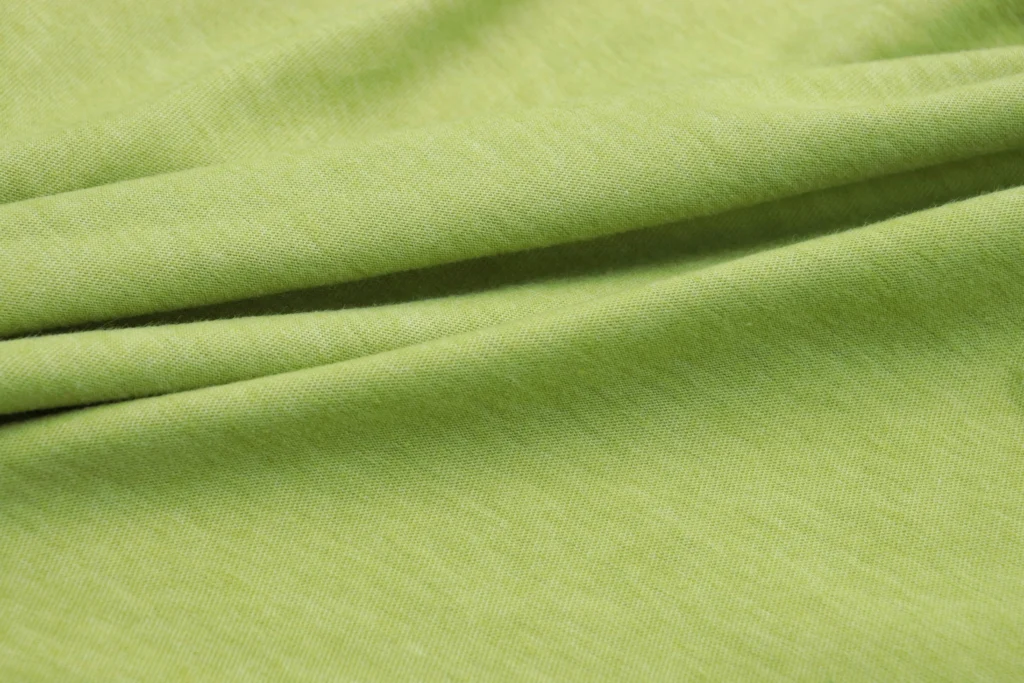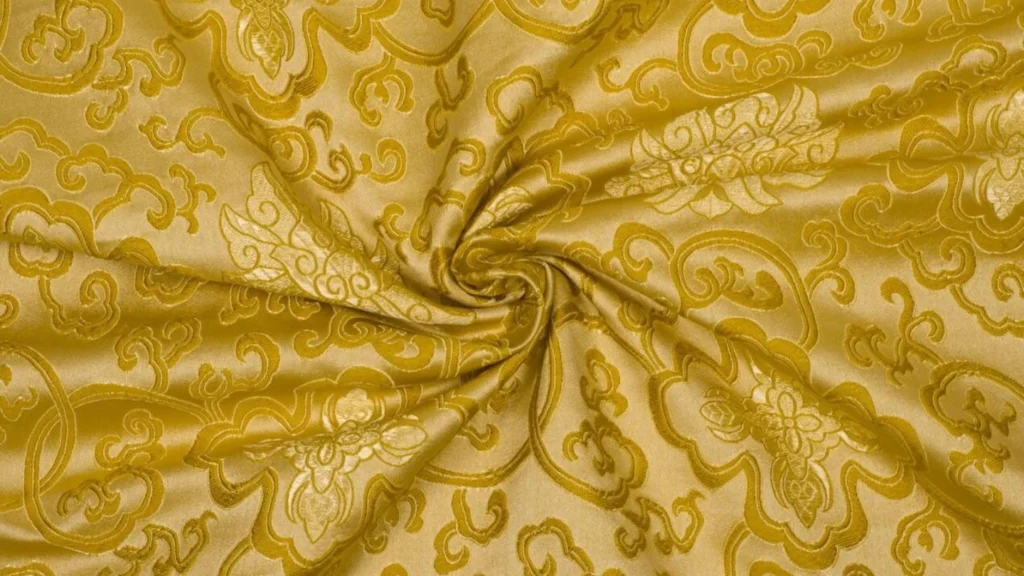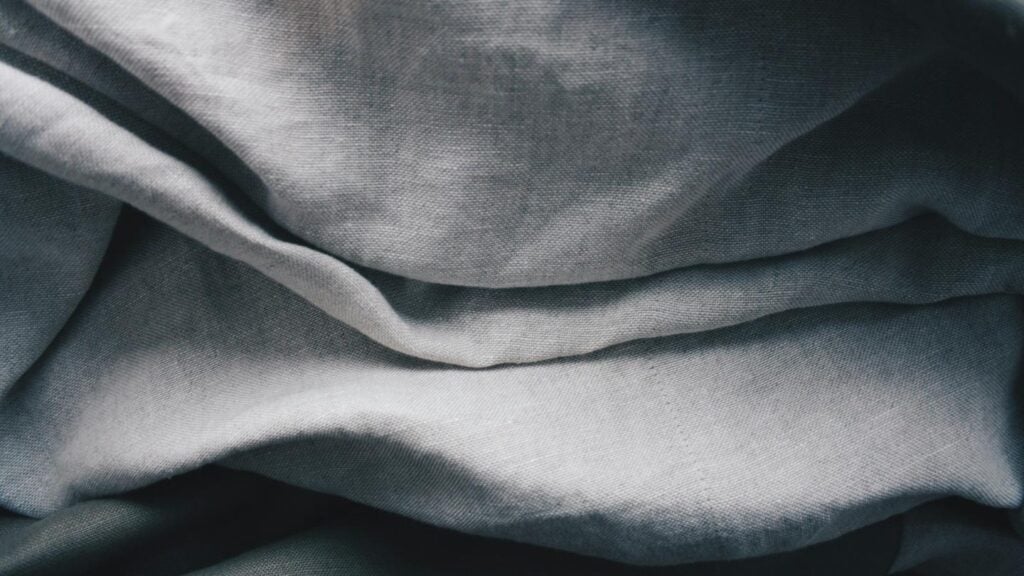2 – Felt Fabric Composition
3 – Felt Fabric vs Other Fabrics
4 – Felt Fabric Is Manufactured
5 – Common Uses in Fashion
6 – Understanding the Environmental Impact of Felt Fabric
7 – Exploring Price Points and Value for Money
8 – Conclusion
9 – FAQs
What is Felt Fabric?
Felt fabric is a dense, non-woven textile made by matting, compressing, and pressing fibers together, without the need for spinning or weaving. It is known for its durability, warmth, and texture. Felt can be made from natural fibers like wool or synthetic fibers such as polyester, offering versatility for various uses.
- Origin:
Felt dates back thousands of years, originating in Central Asia, where it was used for clothing, blankets, and tents by nomadic people. - Composition:
Traditional felt is made from wool, which naturally bonds when subjected to heat, moisture, and pressure. Synthetic felt, made from fibers like acrylic, is more affordable and widely used in crafts and industrial applications. - Properties:
Felt is durable, moisture-resistant, and insulating, making it ideal for fashion, crafts, and industrial uses. Its ability to hold shape without fraying gives it unique functional and aesthetic qualities.

Felt’s rich history and practical features make it a timeless material in both everyday and specialized applications.
Corduroy Fabric Composition
The composition of felt fabric is key to its texture, durability, and functionality. Felt can be made from a variety of fibers, each influencing the fabric’s properties. The choice of fiber not only determines the look and feel of the felt but also its strength, flexibility, and suitability for different uses.
- Wool Felt:
Traditionally, felt is made from wool, a natural fiber known for its insulating properties and ability to bond easily under heat, moisture, and pressure. Wool fibers have tiny scales that interlock when felted, creating a dense, durable fabric. Wool felt is soft, warm, and resistant to wrinkles, making it ideal for fashion, upholstery, and crafting. - Synthetic Felt:
Synthetic fibers like polyester, acrylic, and nylon are also commonly used in felt production. These fibers are more affordable than wool and often more durable, making synthetic felt a popular choice for industrial applications. Synthetic felt is resistant to moisture and mildew, and it maintains its shape and color over time. However, it lacks the natural warmth and softness of wool. - Blended Felt:
In some cases, wool is blended with synthetic fibers to combine the best qualities of both. Wool-blend felt offers the softness and warmth of wool, with the added durability and cost-effectiveness of synthetic fibers. These blends are used in a variety of applications, from fashion to industrial uses, providing a balance between performance and affordability. - Thickness and Density:
Felt fabric can vary in thickness and density depending on the intended use. Thicker, denser felt is used for items that require more structure, such as hats, coats, or industrial materials, while thinner felt is used for craft projects and lightweight garments.

The composition of felt fabric directly influences its properties, from softness and warmth to durability and resistance to wear. Whether made from wool, synthetic fibers, or a combination of both, felt remains a versatile and reliable fabric used across multiple industries.
Felt Fabric V.S Other Fabrics
Felt stands out due to its dense, non-woven structure, offering unique properties compared to other fabrics.
- Felt vs Wool Fabric:
- Wool is woven and flexible, while felt is denser and firmer. Felt is more durable and insulating but less flexible than wool.
- Felt vs Fleece:
- Fleece is soft and lightweight, perfect for casual wear. Felt is more rigid and durable, making it better for structured items like hats and accessories.
- Felt vs Cotton:
- Cotton is breathable and flexible, while felt is thicker, less breathable, and better suited for colder weather or items needing insulation.
- Felt vs Synthetic Fabrics (Polyester, Nylon):
- Synthetic fabrics are durable and moisture-resistant, but felt, especially wool-based, offers more structure and insulation. Synthetic felt is less eco-friendly compared to wool felt, which is biodegradable.

Felt’s unique qualities make it ideal for items requiring durability, structure, and insulation, while other fabrics excel in flexibility and breathability.
How Felt Fabric Is Manufactured
Felt fabric is made through a unique process that differs from traditional woven and knitted textiles. Unlike other fabrics, felt does not require spinning or weaving threads. Instead, fibers are bonded together through heat, moisture, and pressure. Here’s how the manufacturing process works:
- Felting Process:
Felt is typically created by matting fibers together, which can be done through two main methods: wet felting and needle felting. In wet felting, fibers are combined with water and soap, then agitated to interlock and bond. In needle felting, barbed needles are used to tangle the fibers together, creating a dense fabric. - Types of Fibers:
Felt can be made from wool, synthetic fibers like polyester or acrylic, or a blend of both. Wool is the most traditional choice, known for its ability to bond well during the felting process. Synthetic fibers, while less natural, offer greater durability and can be made in various colors and textures. - Thickness and Density:
The thickness and density of felt can vary depending on the number of fibers used and the felting process. Thicker felt is used for items that need more structure, like hats and outerwear, while thinner felt is often used in craft projects and lightweight garments. - Finishing Touches:
After felting, the fabric may be dyed, pressed, or finished in other ways to enhance its color, texture, and durability. Felt can also be treated with additional finishes like water resistance or flame retardants, depending on its intended use.

The manufacturing process of felt gives it its distinctive texture and structure, making it a versatile fabric for a range of applications, from fashion to home décor.
Produce your fashion collection with us
Common Uses in Fashion
Felt fabric’s unique properties—durability, warmth, and texture—make it a versatile material in fashion. Its ability to retain shape and its insulating qualities lend it to a wide variety of applications, from accessories to outerwear. Here are some common uses of felt in fashion:
- Outerwear:
Felt is often used in jackets, coats, and hats due to its warmth and structure. It is particularly popular in colder months, as its dense fibers offer insulation without being bulky. - Accessories:
Felt is widely used in accessories like hats, scarves, bags, and gloves. Its stiffness helps these items retain shape, and it’s a popular choice for statement pieces like felted hats and handbags. - Footwear:
Felt is used in footwear, especially in slippers, boots, and sandals. The fabric’s insulation and softness make it a comfortable and functional option for shoes designed for warmth and comfort. - Crafts and Decorations:
Felt’s ability to hold its shape and be easily cut into intricate shapes makes it ideal for embellishments, appliqué, and decorative accents on clothing, as well as for craft projects like felted flowers or ornaments. - Lining and Interfacing:
Felt is often used as a lining in garments, providing additional structure and comfort. It’s also used as an interfacing material to strengthen certain parts of clothing, like collars or cuffs, without adding bulk. - Children’s Wear:
Felt is frequently used in children’s clothing and toys due to its softness, durability, and ease of use. Felt is often used for creating play costumes or decorative items in kids’ fashion.

Felt’s durability, warmth, and versatility make it a popular choice for fashion designers looking for a fabric that combines both style and function. Its ability to be easily shaped and molded into different forms further adds to its widespread use in accessories, outerwear, and various fashion pieces.
Understanding the Environmental Impact of Felt Fabric
The environmental impact of felt fabric depends largely on the materials used in its production and the manufacturing process. Felt made from natural fibers, particularly wool, tends to have a lower environmental footprint compared to synthetic alternatives, but it still raises several considerations. Here’s a look at the environmental impact of felt fabric:
- Wool Felt:
- Eco-friendly: Wool is a natural, renewable fiber that biodegrades over time, making it more environmentally friendly compared to synthetic materials. However, wool farming can have environmental costs, including land use and water consumption, and there are concerns about animal welfare in some farming practices.
- Sustainability: Some wool producers are shifting toward sustainable practices, such as organic farming, which reduces pesticide use and promotes soil health. Sustainable wool farming can lessen the environmental impact of felt made from this material.
- Synthetic Felt:
- Non-biodegradable: Felt made from synthetic fibers like polyester or acrylic is not biodegradable and can contribute to long-term environmental waste. These fibers are derived from petroleum-based resources, which are non-renewable, adding to the carbon footprint of synthetic felt.
- Energy-Intensive Production: The production of synthetic felt often involves chemical processes that consume significant amounts of energy and water. This increases its overall environmental impact compared to natural fiber-based felt.
- Recycled Felt:
- Recycling Opportunities: Recycled felt, often made from post-consumer polyester, offers a more eco-friendly alternative. By reusing existing materials, recycled felt helps reduce waste and the demand for new resources. The process of recycling also lowers the carbon footprint compared to producing new synthetic fibers.
- Eco-friendly Production: Felt made from recycled wool or synthetic fibers can provide a sustainable option without compromising on quality or durability.
- Water and Dyeing Processes:
- The dyeing process used for felt fabric can contribute to water pollution if not managed properly. Traditional dyeing methods often use large amounts of water and chemicals, which can harm local water sources if the wastewater is not treated adequately.
- Sustainable Dyeing: Some manufacturers are moving toward eco-friendly dyeing methods, such as waterless dyeing or using natural dyes, to reduce the environmental impact of the production process.
While felt made from wool or recycled fibers offers more sustainable options, synthetic felt still raises concerns about environmental impact. As the demand for eco-friendly products grows, many manufacturers are exploring more sustainable materials and production methods to reduce felt’s carbon footprint and environmental harm.
Exploring Price Points and Value for Money
The price of felt fabric varies based on material, manufacturing method, and intended use. Here’s a quick breakdown of what influences the cost:
- Material:
- Wool felt is the most expensive due to its natural properties and labor-intensive production.
- Synthetic felt (e.g., polyester) is more affordable and often used for industrial or craft applications.
- Blended felt combines wool and synthetic fibers, offering a balance of cost and quality.
- Manufacturing Process:
- Needle-felted fabric is less expensive than wet-felted fabric, which is more labor-intensive.
- Custom or handmade felt is pricier due to the craftsmanship involved.
- Thickness and Density:
- Thicker, denser felt for structured items (e.g., coats, upholstery) is more expensive.
- Lighter felt for crafts and accessories is more affordable.
- Sustainability:
- Eco-friendly felt made from organic or recycled materials is often more costly but appeals to environmentally-conscious consumers.
- Value for Money:
- While wool felt is pricier, it offers durability and longevity, making it a good investment for long-lasting items.
- Synthetic felt provides excellent value for short-term or budget-friendly projects.

Overall, the price of felt fabric depends on its composition, manufacturing process, and purpose. Whether you prioritize affordability or quality, there are options that balance cost and performance.
Conclusion
Felt fabric is a durable, versatile material with unique properties like warmth and texture, making it ideal for fashion, accessories, and crafts. Made from natural fibers like wool or synthetic materials, felt offers both practical and aesthetic benefits.
Its environmental impact varies, but sustainable options like recycled and organic wool felt are gaining popularity. Felt’s price depends on the material and manufacturing process, with wool felt being more expensive but long-lasting, while synthetic felt offers an affordable alternative.
Felt remains a timeless choice in fashion, valued for its durability, versatility, and distinctive look.
FAQs
- What is felt fabric made of?
Felt can be made from natural fibers like wool or synthetic fibers such as polyester, acrylic, and nylon. - How do I care for felt fabric?
Felt is easy to care for but should be handled gently. For wool felt, it’s best to dry clean, while synthetic felt can often be machine washed on a gentle cycle. - What are the different types of felt?
Felt comes in various types, including wool felt, synthetic felt, and blended felt, each with different qualities in terms of durability, texture, and cost. - Can I use felt for clothing?
Yes, felt is used in outerwear, accessories, and sometimes in decorative clothing. Its insulating properties make it ideal for colder weather items like hats, jackets, and scarves. - Is felt fabric eco-friendly?
Wool felt is biodegradable and renewable, making it more eco-friendly than synthetic felt. However, synthetic felt is less environmentally sustainable. - How is felt fabric made?
Felt is created by matting and pressing fibers together using heat, moisture, and pressure. This non-woven fabric can be made through wet felting or needle felting. - Can I use felt for crafts?
Yes, felt is a popular material for crafting due to its easy-to-cut nature and ability to hold its shape. It’s used in everything from decorations to toys and appliqué designs. - Is felt fabric durable?
Yes, felt is generally durable, especially wool and synthetic blends, and it holds its shape well without fraying. - Is felt fabric expensive?
The price of felt varies. Wool felt tends to be more expensive due to its high quality, while synthetic felt is more affordable. - Can I dye felt fabric?
Yes, felt can be dyed, though wool felt takes dye better than synthetic felt. For synthetic felt, specialized dyes are recommended to achieve good color results.







